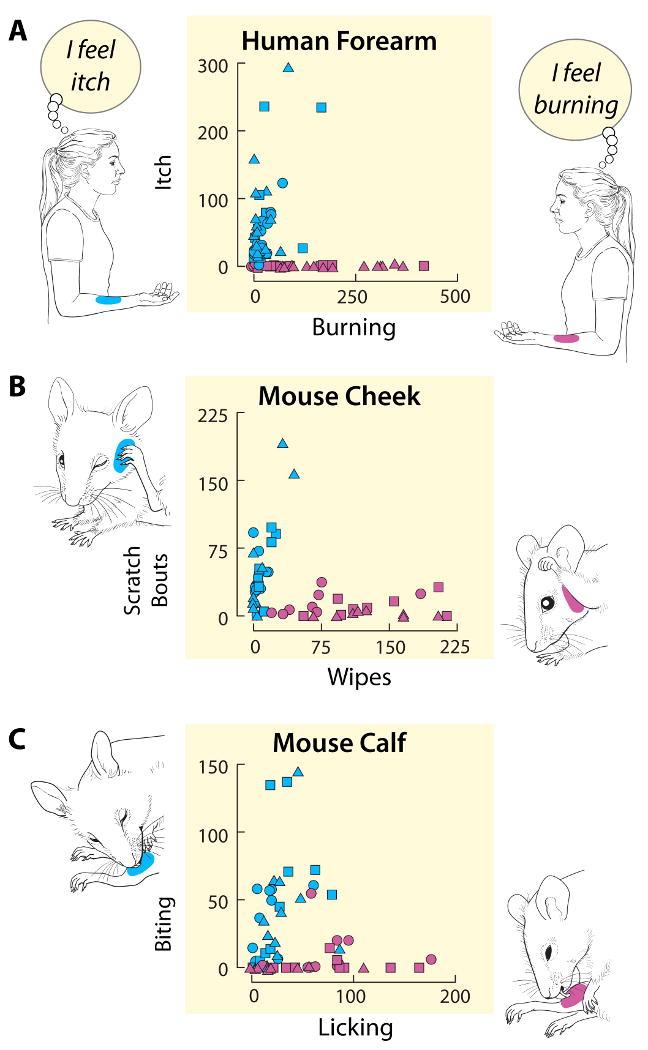Figure 1.

Itch and nociceptive sensations in humans and site-directed behaviors in mice evoked by intradermal injections of capsaicin and histamine. The different symbols represent different doses of histamine (Teal-blue) and capsaicin (Pink). The drawings and adjacent labels of the axes of each graph indicate the dominant qualities of sensation felt by human subjects (A) and the dominant site-directed behaviors exhibited by the mouse evoked by each chemical injected into the specified site on the skin (forearm for humans and either cheek or calf for the mouse). A: The magnitude of itch plotted against the magnitude of burning reported by humans in response to injections in the forearm. Each data point is from one experiment from one of 15 subjects and is the area under the rating curve (intensity vs. time) for itch plotted against the area obtained for burning (similar data for pricking/stinging not shown). For histamine and capsaicin: squares = 0.1 μg in 10 μl, circles = 1.0, triangles = 10. B: The amount of scratching and wiping directed toward the site of a histamine or capsaicin injection into the cheek of the mouse. Each point represents the number of wipes plotted against the number of scratching bouts observed in one mouse for the 20 min following the injection (8 mice at each dose, except n = 10 for histamine = 10 μg) Histamine: squares = 10 μg in 10 μl, circles = 20, triangles = 50; capsaicin: squares = 1 μg in 10 μl, circles = 10, triangles = 40 (modified from Fig. 5, Shimada and LaMotte 2008 (27). C: Total time mice spent licking vs. biting the site of an injection of histamine or capsaicin into the calf of the hind leg. Each data point represents the cumulative amount of time spent biting and licking observed for one mouse for the period of 30 min after it received a particular dose of either capsaicin or histamine. Data for 10 mice at each dose are shown. Histamine: squares = 10 μg in 10 μl, circles = 20, triangles = 50; capsaicin: squares = 4 μg in 10 μl, circles = 10, triangles = 40. All animals were tested under protocols approved by the Institutional Animal Care and Use Committee, and all humans tested with informed consent and protocols approved by the Human Investigation Committee, at Yale University School of Medicine.
